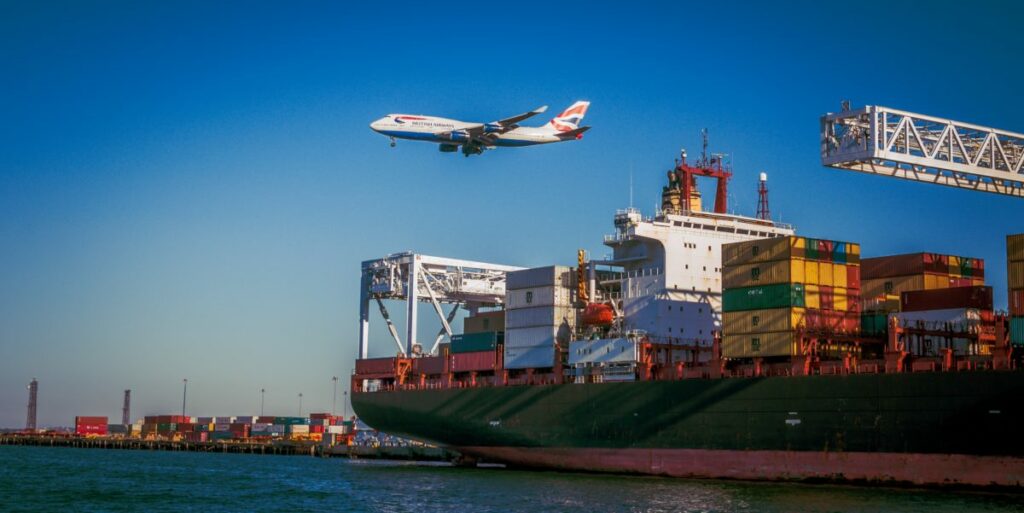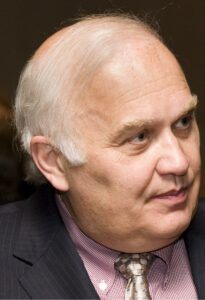Leeham News and Analysis
There's more to real news than a news release.
Pontifications: A retrospective of the KC-X refueling tanker competition from Boeing’s perspective
 Part 2 of the Boeing focus for the USAF Aerial Refueling Tanker
Part 2 of the Boeing focus for the USAF Aerial Refueling Tanker
Jan. 24, 2022, © Leeham News: Jim Albaugh was president of Boeing Integrated Defense System (IDS), now known as Boeing Defense, Space and Security (BDS) during the competition for the US Air Force’s KC-X program.
After 9/11 (2001), Boeing was reeling as US airlines canceled or deferred orders in the aftermath of the terror attacks in New York City and Washington (DC). Terrorists hijacked four airplanes (all Boeing, as it turned out) operated by American and United airlines. Then, US carriers dominated the world market as customers for Boeing and Airbus. Boeing was disproportionately affected, as it was the USA’s two biggest airlines that were victims of the terror attacks.
Forecast 2022: IRKUT
Subscription Required
By Bjorn Fehrm
Introduction
January 24, 2022, © Leeham News: IRKUT became the Airliner company in Russia’s United Aircraft Corporation when the Superjet project was transferred from Sukhoi in February 2020.
The rationale was to focus the new single-aisle MC-21 and the regional Superjet in one entity where the needed investment in after-sales support, a chronic weakness of Russian aircraft, could be concentrated.
The MC-21 is the most advanced of the world’s single-aisle designs, with a roomy fuselage and a composite wing. But this, the market’s best design, has the worst chances for success. We go through why.
Summary
- The MC-21 has a fuselage design that makes it roomier without causing extra drag or weight.
- It also has the most advanced wing, an out-of-autoclave resin infusion design, the type which Airbus is aiming for in the “Wing of Tomorrow” project.
- But despite the best technology, it has the slimmest market chances. It has little to do with the aircraft itself.
Bjorn’s Corner: Sustainable Air Transport. Part 3. Low hanging fruit.
January 21, 2021, ©. Leeham News: Whatever is done in terms of new Sustainable technology for the aircraft, will have a limited influence on the amount of Greenhouse gases that Air Transport emits before 2050.
We will only get the new aircraft types into operation about 15 years before the deadline and with, on average, 100 to 200 aircraft per year. That’s 1,500 to 3,000 of the total of 25,000 aircraft that operate in our skies daily. It will not reduce our Greenhouse gas emissions significantly.
Sustainable Aviation Fuel, SAF, will help, but only when it’s available in quantity and to a reasonable cost. We can do things that have a much faster effect, and that’s how we manage our flights.
Reducing one’s carbon footprint through flying choices
Subscription Required
By Vincent Valery
Introduction
Jan. 20, 2022, © Leeham News: Discussions about reducing commercial aviation’s carbon emissions have become more prominent over the last few years.
Many projects claim that electric(-hybrid) and hydrogen aircraft will be available in the not-too-distant future to make net-zero emissions flying a reality. Sustainable Aviation Fuels (SAFs) will also drastically reduce lifecycle carbon emissions with only minor changes to the current aircraft.
The IATA committed to a net-zero carbon emissions target by 2050. While all those long-term aspirations are well, significant challenges remain.
LNA has highlighted that the low energy density of batteries means that electric aircraft can at best work on small planes for short flights. Developing a medium-haul hydrogen-powered aircraft will require numerous innovations that suggest an entry into service before 2035 is not realistic. The challenges in increasing SAFs supply affordably to meaningful levels are monumental.
We have pointed out that all the above are far into the future. To meaningfully reduce emissions over the next decade, the introduction of more fuel-efficient gas turbines and turboprops is the only realistic and impactful lever.
Another lever has not been mentioned so far to reduce one’s carbon emissions. Other than not flying at all, how we fly from A to B can have significantly different carbon footprint levels.
This series will highlight the different levels of carbon emissions depending on how one flies on different routes.
Summary
- Setting the problem out;
- Challenges in defining unit emissions;
- Factors outside one’s control;
- Introducing a few examples.
US 5G roll out ignores concerns for Air Transport safety
By Bjorn Fehrm
January 18, 2022, ©. Leeham News: Despite year-long protests from the World’s airlines and the FAA, the FCC (Federal Communications Commission) allows Verizon and ATT to roll out 5G base stations underneath the approach paths of landing aircraft in the US.
In 2020 the RTCA (Radio Technical Commission for Aeronautics) did tests that established the risk of 5G Base stations affecting the critical Radio Altimeters needed for bad weather landings as real.
After FAA issues a 2021 December 23 AD (Airworthiness Directive) about the danger, airlines must now decide what flights must be canceled during bad weather spells on affected airports.
2022 Forecast: C919 EIS unlikely before 2023-24
Subscription Required
By Scott Hamilton
Introduction
Jan. 17, 2022, © Leeham News: COMAC, the Chinese aerospace company developing the C919, suffered yet another setback last year.
It hoped to deliver the first aircraft, designed to compete with the Airbus A320 and Boeing 737-800/8, to China Eastern Airlines by year end. Not only didn’t this delivery take place, but the program is also only about 15% through the certification flight testing.
At this rate, certification, and delivery this year is questionable. LNA’s forecast for EIS is in 2023 or 2024.
COMAC’s other airplane, the regional jet ARJ21, landed its first order outside China (other than from lessor GECAS years ago).
Summary
- C919 is overweight, shortening range, and adversely affecting fuel economy.
- Commercial success of the C919 won’t be possible.
- ARJ21 lands first foreign operator, but it’s not an arm’s length deal.
Pontifications: COTS and the KC-46A Aircraft Production Systems
Part 1 in a Boeing series about the USAF refueling tanker
By the Leeham News Team
January 17, 2022, © Leeham News: COTS is an acronym meaning Commercial Off the Shelf. It’s often a requirement for certain types of aircraft to be used by the US Air Force.
The title is a bit misleading in that in most cases, there is no directly usable off-the-shelf product, but instead, a jumping-off point that saves a tremendous amount of development. In aircraft procurement, many things have been bought this way. The advantage to the Air Force is that they get a known flyable aircraft that is for the most part debugged and has an operational history that allows the Air Force to estimate the maintenance burden and training requirements. It shaves years off the acquisition process and can be a very cost-effective way to gain new capabilities.
Bjorn’s Corner: Sustainable Air Transport. Part 2. The problem to solve?
January 14, 2021, ©. Leeham News: Before we dig into the different alternatives we have for more Sustainable Air Transport, let’s look at the problem and its sources.
Figure 1 shows the emissions of CO2 per person since 1900 and the rise of the world temperature. The increase in world temperature changes the weather, with increased weather-related emergencies in recent years.
Air freight growth: one-hit wonder or long-term trend?
Subscription Required
By Judson Rollins
Introduction
January 13, 2022, © Leeham News: COVID-19 has upended the freight world, with air delivery now becoming relatively economical versus the high premium they previously commanded over sea freight. While air freight yields on most trade lanes are 2-3x their pre-pandemic levels, sea freight yields are 8-10x their 2019 levels in lanes like Asia to North America and Asia to Europe.
Sea freight schedule reliability has fallen sharply over the past 18 months driven by a spectrum of port, labor, and container availability issues. Shippers are increasingly frustrated by the large and growing number of “blank sailings,” the industry’s term for canceled departures.
To offer customers backup options – and increase their value capture – ocean freight carriers are starting to buy their own aircraft. Maersk announced its purchase of two Boeing 777Fs in November, while CMA CGM Group said in December that it would order four Airbus A350Fs to complement its existing fleet of five Airbus A330Fs.
As the COVID crisis extends into its third year, will air freight demand prove sustainable at today’s levels? To what extent will capacity increase to match?
Summary
- Sea freight capacity will remain tight for the foreseeable future.
- New-build freighter availability is limited at present.
- Today’s air freight demand spike is unlikely to last beyond mid-decade.
Pontifications: Teaming with Lockheed Martin for the KC-Y tanker competition
Jan. 10, 2022, © Leeham News: Sean O’Keefe retired from EADS/Airbus in 2014. Boeing won the re-bid contract for the US Air Force aerial refueling tanker in 2011. The third round of the tanker competitions was every bit as bitter as the second round, which Northrop Grumman/EADS won.
Boeing is in the process of producing 179 KC-46A tankers, with about half delivered. Beset by delays, technical issues, and cost overruns, Boeing nevertheless has the presumed advantage of being the incumbent supplier.
Lockheed Martin/Airbus will offer the A330-200-based MRTT tanker. Most have Rolls-Royce engines. The remainder has GE Aviation power plants. The LMXT, as the new tanker version is currently called, will be assembled in the US. If RR engines are chosen, these, too, will be assembled in the US, Lockheed says.
Although O’Keefe is no longer associated with Airbus and he is not a consultant to or otherwise advising Lockheed and Airbus, LNA asked him what he would advise if asked after benefitting from the Round 3 competition.








